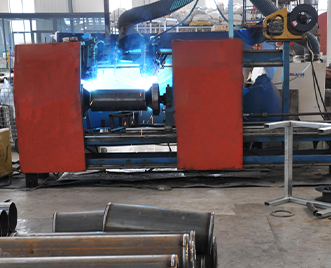Nov . 06, 2024 17:54 Back to list
auto submersible pump
Understanding Auto Submersible Pumps Efficiency and Applications
Auto submersible pumps are vital components in various industries, revolutionizing the way fluids are managed and transported. These pumps are specifically designed to operate while submerged in the fluid they are pumping, making them efficient for a range of applications, from drainage to agricultural irrigation.
How Auto Submersible Pumps Work
The design of auto submersible pumps allows them to function under the water's surface, which is a distinctive feature compared to traditional pumps that require external priming. These pumps are equipped with a sealed motor that prevents water from entering, allowing them to operate continuously without fear of damage. The pump’s impeller is situated at the bottom, which helps to draw in liquid efficiently. Once activated, the impeller rotates and generates pressure, pushing the water to the discharge point.
One of the primary benefits of auto submersible pumps is their energy efficiency. The submerged operation reduces the risk of cavitation (the formation of vapor bubbles that can cause damage and reduce efficiency), ensuring that fluid is moved with less energy. This efficiency translates into lower operational costs, making them an attractive option for both commercial and residential use.
Applications Across Industries
Auto submersible pumps find applications in a variety of sectors. In construction, they are used for dewatering excavations, especially in areas prone to flooding or where underground water needs to be managed. In agriculture, these pumps are instrumental for irrigation systems, providing a reliable water source even in remote locations. Their ability to operate submerged makes them ideal for transferring water from wells, ponds, or other bodies of water.
auto submersible pump

Moreover, in municipal and industrial waste management, auto submersible pumps are utilized to handle sewage and wastewater. Their robust construction can handle solids and debris, allowing for the efficient transport of sewage to treatment facilities. This not only helps maintain sanitation but also contributes to environmental protection by ensuring that wastewater is dealt with appropriately.
Advantages of Auto Submersible Pumps
One of the most significant advantages of auto submersible pumps is their ability to operate in confined spaces where traditional pumps cannot. This makes them particularly useful in harsh environments such as mines or underground caverns. Additionally, the more straightforward installation process, often requiring minimal surface infrastructure, saves time and resources.
Furthermore, modern versions of these pumps come with advanced technology, including float switches and automatic controls that enable them to operate autonomously. These features enhance reliability and reduce the need for manual intervention, making them an excellent choice for ongoing operations.
Conclusion
In conclusion, auto submersible pumps are indispensable tools in many industries, offering efficiency, versatility, and innovation. Whether for drainage in construction, irrigation in agriculture, or wastewater management, their submerged design and operation present distinct advantages. As technology continues to advance, we can expect these pumps to evolve further, providing even greater performance and reliability in fluid management tasks. Understanding their capabilities and applications is essential for anyone involved in fluid management processes, ensuring optimal performance and sustainability in various fields.
-
Submersible Water Pump: The Efficient 'Power Pioneer' of the Underwater World
NewsJul.01,2025
-
Submersible Pond Pump: The Hidden Guardian of Water Landscape Ecology
NewsJul.01,2025
-
Stainless Well Pump: A Reliable and Durable Pumping Main Force
NewsJul.01,2025
-
Stainless Steel Submersible Pump: An Efficient and Versatile Tool for Underwater Operations
NewsJul.01,2025
-
Deep Well Submersible Pump: An Efficient 'Sucker' of Groundwater Sources
NewsJul.01,2025
-
Deep Water Well Pump: An Efficient 'Sucker' of Groundwater Sources
NewsJul.01,2025
-
 Submersible Water Pump: The Efficient 'Power Pioneer' of the Underwater WorldIn the field of hydraulic equipment, the Submersible Water Pump has become the core equipment for underwater operations and water resource transportation due to its unique design and excellent performance.Detail
Submersible Water Pump: The Efficient 'Power Pioneer' of the Underwater WorldIn the field of hydraulic equipment, the Submersible Water Pump has become the core equipment for underwater operations and water resource transportation due to its unique design and excellent performance.Detail -
 Submersible Pond Pump: The Hidden Guardian of Water Landscape EcologyIn courtyard landscapes, ecological ponds, and even small-scale water conservancy projects, there is a silent yet indispensable equipment - the Submersible Pond Pump.Detail
Submersible Pond Pump: The Hidden Guardian of Water Landscape EcologyIn courtyard landscapes, ecological ponds, and even small-scale water conservancy projects, there is a silent yet indispensable equipment - the Submersible Pond Pump.Detail -
 Stainless Well Pump: A Reliable and Durable Pumping Main ForceIn the field of water resource transportation, Stainless Well Pump has become the core equipment for various pumping scenarios with its excellent performance and reliable quality.Detail
Stainless Well Pump: A Reliable and Durable Pumping Main ForceIn the field of water resource transportation, Stainless Well Pump has become the core equipment for various pumping scenarios with its excellent performance and reliable quality.Detail
